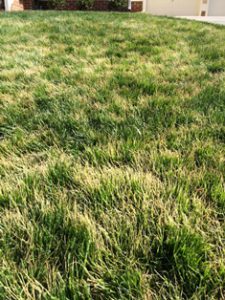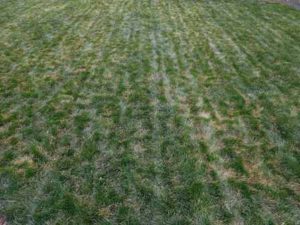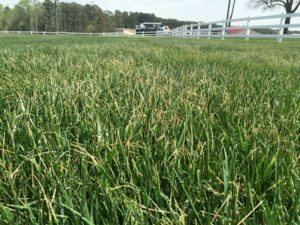Spring Cleanup of Tall Fescue Damage
go.ncsu.edu/readext?474954
en Español / em Português
El inglés es el idioma de control de esta página. En la medida en que haya algún conflicto entre la traducción al inglés y la traducción, el inglés prevalece.
Al hacer clic en el enlace de traducción se activa un servicio de traducción gratuito para convertir la página al español. Al igual que con cualquier traducción por Internet, la conversión no es sensible al contexto y puede que no traduzca el texto en su significado original. NC State Extension no garantiza la exactitud del texto traducido. Por favor, tenga en cuenta que algunas aplicaciones y/o servicios pueden no funcionar como se espera cuando se traducen.
Português
Inglês é o idioma de controle desta página. Na medida que haja algum conflito entre o texto original em Inglês e a tradução, o Inglês prevalece.
Ao clicar no link de tradução, um serviço gratuito de tradução será ativado para converter a página para o Português. Como em qualquer tradução pela internet, a conversão não é sensivel ao contexto e pode não ocorrer a tradução para o significado orginal. O serviço de Extensão da Carolina do Norte (NC State Extension) não garante a exatidão do texto traduzido. Por favor, observe que algumas funções ou serviços podem não funcionar como esperado após a tradução.
English
English is the controlling language of this page. To the extent there is any conflict between the English text and the translation, English controls.
Clicking on the translation link activates a free translation service to convert the page to Spanish. As with any Internet translation, the conversion is not context-sensitive and may not translate the text to its original meaning. NC State Extension does not guarantee the accuracy of the translated text. Please note that some applications and/or services may not function as expected when translated.
Collapse ▲Over the last several weeks we have had reports of tall fescue turf “browning out” (see photos below).
We have observed and received numerous reports of winter injury on tall fescue following the night of March 29. A number of lawn care operators, landscape management companies and individual homeowners from all around the state including Alamance, Catawba, Mecklenburg, Moore and Wake counties noticed this problem after March 29 when overnight temperatures dipped into the low 20’s. The key symptom has been limited mostly to the leaf tips. It appeared to be especially prevalent on well fertilized turf with more lush growth and also on turf that was not as mature which may have been seeded in late fall as either a new planting or a renovation to increase stand density.
There is good news at this point. Turf that was severely affected is recovering with warmer weather and mowing which removes the damaged leaf tissue. Given good growing conditions expected over the next week, turf should continue to recover without severe long term problems expected.
As for warm-season grasses, current (mid-April) turf conditions suggest this may be a better spring for warm-season grasses than the last two. Bermudagrasses and centipedegrass grasses are just starting to green while zoysiagrass with sun exposure seems to be coming on strong. We have also noted that bermudagrass greens that were covered for the low temperatures are mostly green whereas uncovered greens are at least a couple of weeks behind.
Diseases such as dollar spot on creeping bentgrass, Pythium blight on ultradwarf bermudagrass putting greens, and large patch on warm-season turfgrasses have been diagnosed in recent weeks, but the occurrence at this time does not seem to be elevated above what would be expected for this time of year. If the spring stays wet, this may change.







